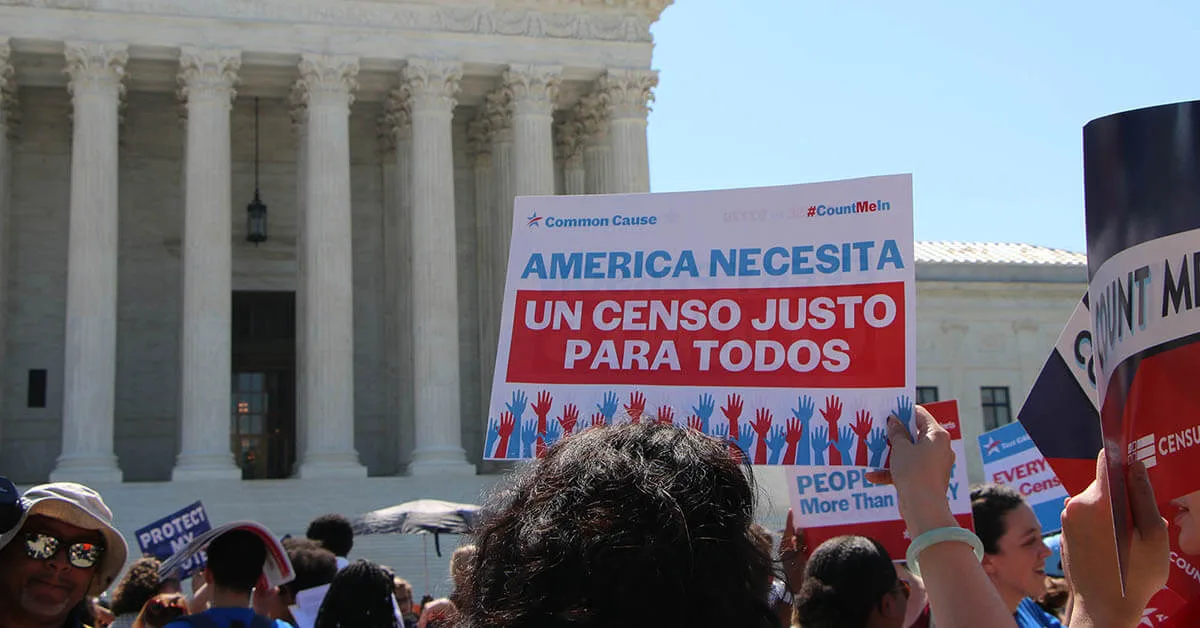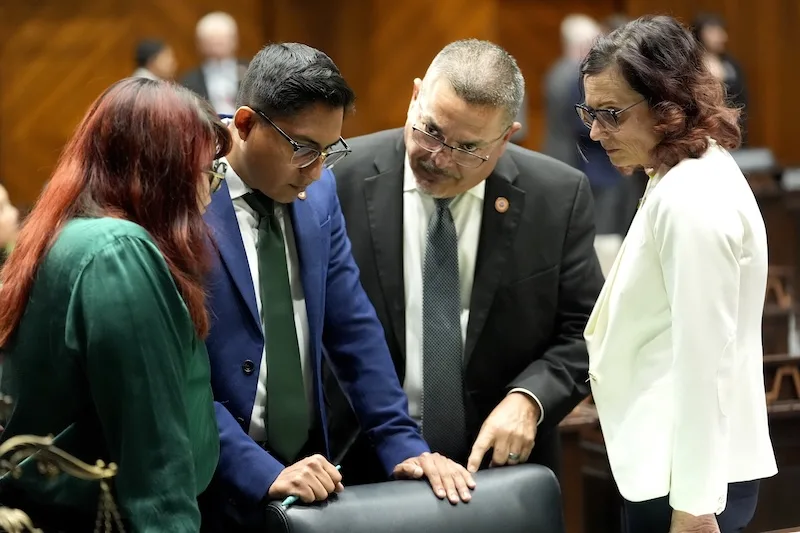
Miranda Faulkner/Cronkite News
Critics called the president’s plan a political attack on immigrants who have always been counted in the census.
The Trump administration said it does not know how many immigrants might be excluded from the Census under a 2019 presidential order, but it still urged the Supreme Court on Monday to overturn lower courts that blocked the proposal.
That was one of the arguments raised Monday as the court considered President Donald Trump’s order directing the bureau to exclude undocumented immigrants from the census. The number in that report, which is supposed to be delivered to the president by Dec. 31, is used to determine everything from congressional representation to the allocation of trillions in federal funds over a decade.
Critics called the president’s plan a political attack on immigrants who have always been counted in the census, which requires the inclusion of every “person” living in the country on April 1, when the count is taken.
“We know that undocumented immigrants contribute in taxes, from sales taxes to property taxes,” said Karina Ruiz, executive director at the Arizona Dream Act Coalition. “It’s incredible that this administration’s not allowing us to be counted to be a part of the benefit that comes with the contributions that we make.”
But supporters of the president’s move say that including undocumented migrants in the census will “deny representation to Americans in some states and give it to illegal aliens who live in other states.”
“American citizens will be cheated out of representation, Congress cheated out of federal dollars,” if the justices do not rule in favor of Trump, said Ira Mehlman, a spokesman for the Federation for American Immigration Reform.
This is the second time in two years that the Supreme Court has heard a Census Bureau case against a tight deadline. The court last year said the bureau could not include a citizenship question on the 2020 Census because it had failed to follow proper procedures before announcing the change.
That led to Trump’s executive order in July 2019 directing the bureau to “take all appropriate action” to deliver a census report, for purposes of apportioning seats in Congress, that excludes “aliens who are not in a lawful immigration status” in this country.
The order faced immediate court challenge, and a district court in New York ruled in September that the administration’s arguments were “not remotely convincing.”
The Supreme Court agreed to expedite its review of the case, because of the end-of-year deadline. But it was unclear from Monday’s argument if the judges will rule in time for the Census Bureau to deliver its report to Trump – or even if it needs to.
That argument was made by Acting Solicitor General Jeffrey Wall, who said it was too early for opponents to claim injury from the executive order.
Wall told the justices that since the bureau does not know “even roughly how many illegal aliens it’ll be able to identify, let alone how their number and geographic concentration might affect apportionment.” The process should be allowed to go forward, he said, and the courts can sort out any damages afterwards – if there are any.
But several justices referred to the difficulty of ruling after the fact, with federal and state governments up against tight deadlines to apportion seats in Congress and draw new district boundaries in time for the 2022 elections. Chief Justice John Roberts and others compared it to “unscrambling the eggs.”
Justices also grilled Wall on the categories of immigrants that the bureau might be able to identify and exclude from the census: those awaiting deportation and those in Immigration and Customs Enforcement custody, for example. While those records are relatively easy to obtain, Wall said, the challenge is matching them against census records to see if any of those people were counted.
But Justice Elena Kagan said the numbers could quickly add up if the president was allowed to exclude undocumented immigrants. While there may only be several thousand in ICE custody, she said, there are as many as 200,000 people subject to deportation orders, 700,000 recipients of DACA, or deferred deportation, and as many as 3.2 million in removal proceedings.
“What I’m getting from you is we can get very easily to 4 or 5 million people who you have extensive administrative records on,” Kagan said.
Wall urged the court to turn to the merits of the president’s policy, saying that “any sound theory of political representation” would give him the authority to deny representation to people here illegally.
“The president has at least some discretion to determine that at least some illegal aliens lack enduring ties to the states,” Wall said.
Attorneys for the plaintiffs flatly rejected that argument.
“For 230 years, dating to the founding, states have always held seats in the House according to the number of persons in each state without regard to immigration status,” said Dale Ho, voting rights project director for the American Civil Liberties Union, in his argument to the justices.
Mehlman said the court will eventually need to answer that question.
“So these are issues that, longer term, are going to have to be addressed because it is just basically unfair to have people who were in the country illegally getting representation and federal money at the expense of everybody else in the country,” he said.
Ruiz called the plan a ploy by an administration losing power that is trying “every little thing they can leave a legacy or to do something that could potentially affect undocumented immigrants.” But it affects more than immigrants, she said.
“I think that not just undocumented immigrants should be worried about this action, but well as a citizen, because ultimately, they’re going to be affected,” she said. “We are part of a community. And we live in these communities. If the resources, if the money is not allocated correctly, our communities are going to be the ones who are going to suffer.”
Politics

Democrats clear path to bring proposed repeal of Arizona’s near-total abortion ban to a vote
Democrats in the Arizona Senate cleared a path to bring a proposed repeal of the state's near-total ban on abortions to a vote after the state's...

It’s official: Your boss has to give you time off to recover from childbirth or get an abortion
Originally published by The 19th In what could be a groundbreaking shift in American workplaces, most employees across the country will now have...
Local News

Kari Lake calls on Arizona county sheriffs to enforce 1864 abortion ban
Republican candidate for US Senate Kari Lake on Saturday seemed to solidify her support for Arizona’s total abortion ban and called on county...

Where to buy farm-fresh eggs in Tucson
Once you’ve tasted farm-fresh eggs, it’s hard to go back to the store-bought variety. Not only do farm-fresh eggs taste better and have...




